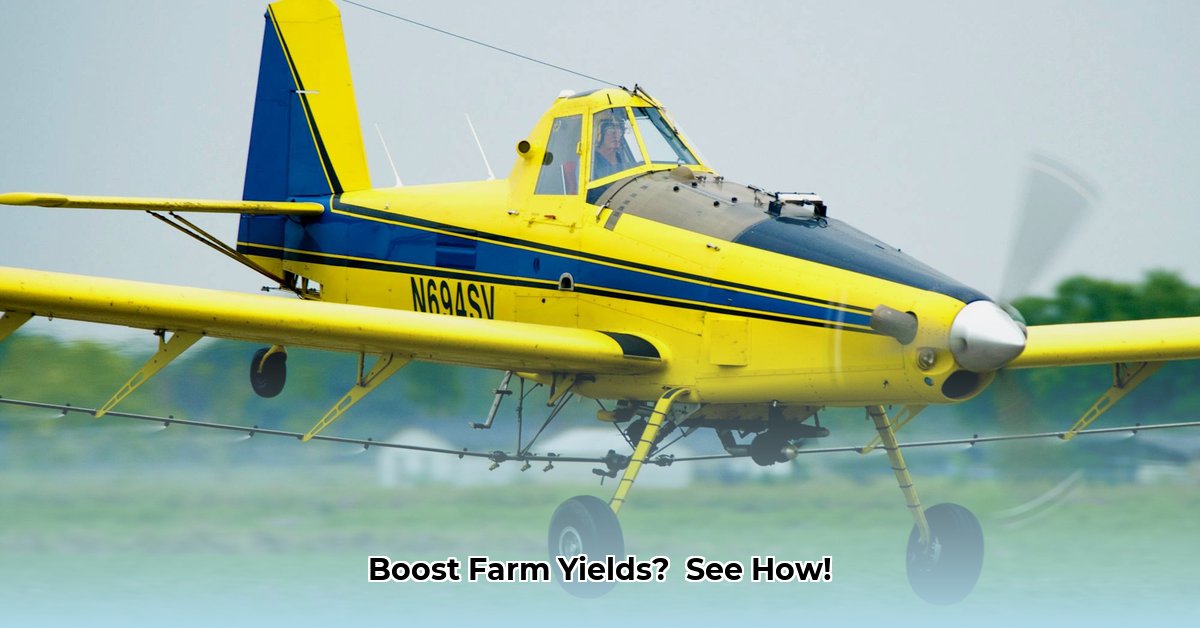
The Air Tractor AT-502B is more than just an airplane; it's a cornerstone of modern agriculture, renowned for its exceptional payload capacity and rugged reliability. This article delves into the AT-502B's capabilities, market position, challenges, and future prospects, providing actionable insights for various stakeholders in the agricultural aviation industry. For more in-depth information, visit the AT-502B website.
Power and Payload: The AT-502B's Operational Prowess
The AT-502B's dominance stems from its impressive combination of power and payload. Capable of carrying up to 500 gallons (1893 liters) of crop protection materials or fertilizer in a single load, it allows for swift coverage of expansive fields. This translates to significant time and cost savings for farmers. Its robust construction ensures it can withstand the demands of daily operations across diverse terrains. Furthermore, its fuel efficiency relative to its payload capacity is a key differentiator, contributing to reduced operational costs. Isn't maximizing efficiency and minimizing downtime a farmer's dream?
Market Leadership: The AT-502B's Enduring Success
Since its introduction in 1987, over 1,000 AT-502Bs have entered service, a testament to the aircraft's reliability and performance. This widespread adoption is not merely a matter of chance; the AT-502B's reputation for durability and efficiency is well-established within the agricultural aviation community. For large-scale aerial applications, it's frequently considered the industry standard. While competitors exist, the AT-502B maintains a leading market share due to its proven track record and robust build.
Navigating Challenges and Shaping the Future
The agricultural aviation sector faces an evolving landscape of challenges and opportunities. Factors such as escalating fuel prices, increasingly stringent environmental regulations, and the emergence of competing technologies (like drones) present significant hurdles. However, the AT-502B's proven design and capabilities offer a strong foundation for adaptability and continued success.
Key Challenges:
- Regulatory Scrutiny: Increasing government oversight necessitates proactive engagement with regulatory bodies and the implementation of robust safety and compliance programs.
- Fuel Costs: Rising fuel prices demand exploration of fuel-efficient engine upgrades and optimization of flight paths and operational strategies.
- Competition: The emergence of alternative technologies requires continuous market research, strategic adaptation, and potential diversification of services.
Actionable Insights for Stakeholders
The continued success of the AT-502B hinges on a collaborative effort across the industry. Specific actions are crucial for each stakeholder group:
1. Air Tractor:
- Invest in R&D for more fuel-efficient engines and alternative fuel systems.
- Maintain a robust and reliable supply chain for parts.
- Actively engage with regulatory bodies to shape future regulations.
2. Agricultural Operators:
- Implement comprehensive cost analysis, considering fuel efficiency, maintenance, pilot salaries, and insurance.
- Prioritize thorough pilot training and robust safety protocols.
- Regularly assess the long-term economic viability of the AT-502B, considering potential replacements based on rigorous cost-benefit analyses.
3. Regulatory Bodies:
- Continuously update safety standards for agricultural aviation.
- Monitor the environmental impact of aerial applications closely.
- Develop regulations that promote the adoption of sustainable and environmentally friendly solutions.
4. Environmental Advocates:
- Actively promote reduced pesticide use and the adoption of environmentally sound farming practices.
- Support research and development of environmentally friendly alternatives to traditional agricultural methods.
The AT-502B's Enduring Legacy
The Air Tractor AT-502B plays a critical role in modern agriculture, essential for maximizing yields and ensuring food security. Addressing the challenges outlined above through innovation and proactive collaboration will be vital to the aircraft's continued success. Its future is intricately tied to the industry's ability to balance efficiency, cost-effectiveness, and environmental responsibility. While the path ahead may present uncertainties, the AT-502B's enduring impact on global agriculture remains undeniable. How can we further improve the efficiency and environmental responsibility of agricultural aviation?